With offset
Tile laying with offset, imitating brickwork, is quite common. It looks minimalistic, but sets the necessary rhythm for the space. The seams are filled with contrasting grout or made to match the ceramics.
Half offset is suitable for working with a rectangular “hog”, where the aspect ratio is 2:1. Tiles of non-standard sizes, for example, those of different lengths, can be shifted a smaller distance, creating an original collage.
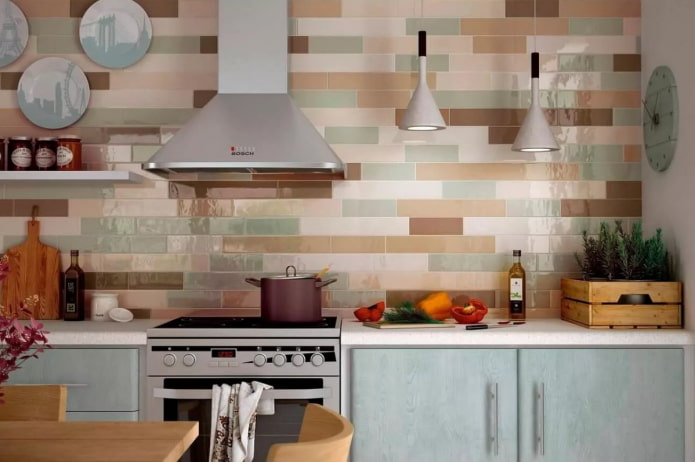
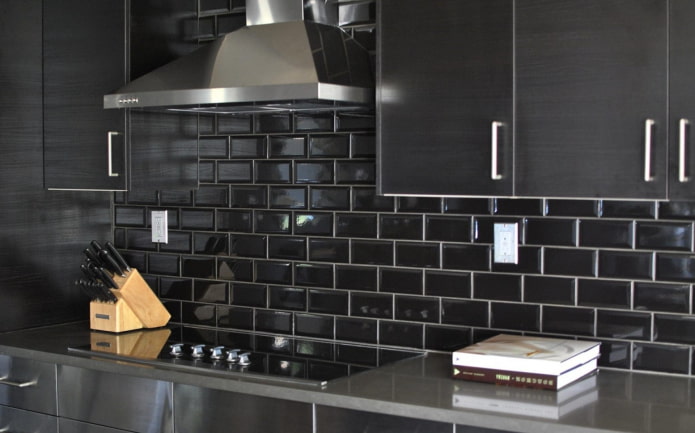
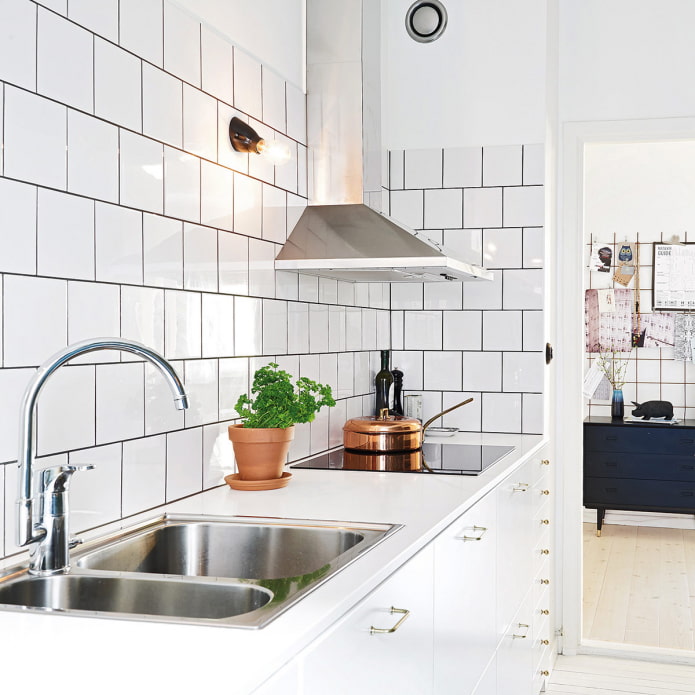
«Herringbone»
The zigzag method of laying is convenient because it is suitable for rectangular tiles with any aspect ratio. The pattern looks non-trivial even in white and replaces additional decor for those accustomed to laconic interiors “with a twist”.
There are several options for the “herringbone” layout:
- Vertical. The most popular option, in which the tops of the zigzags rush to the ceiling.
- Horizontal. The bottom row of tiles is glued at an angle of 45 degrees to the surface of the table, the next row is turned in the opposite direction. As a result, the tops of the “herringbones” are directed towards the wall.
- At an angle. The tiles are installed perpendicular to each other so that one of them is directed across the plane of the work surface, and the second along.
Zigzag is also used when finishing an apron with parallelogram-shaped tiles. The modules are placed exactly one above the other, separated by vertical lines. The apron looks both strict and elegant.
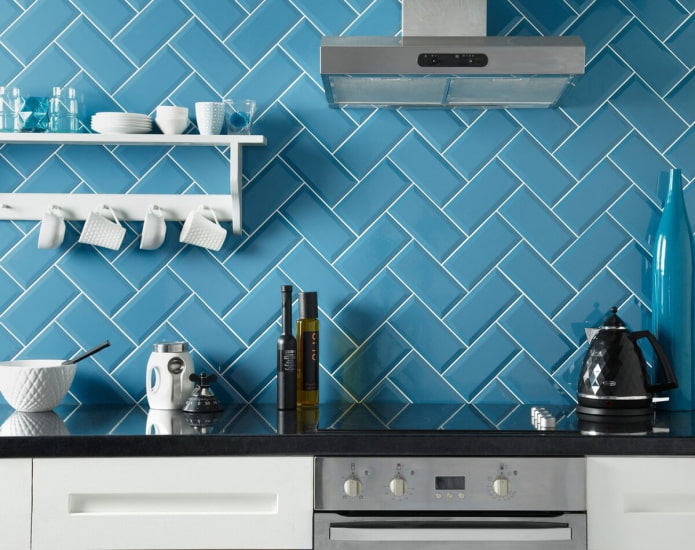
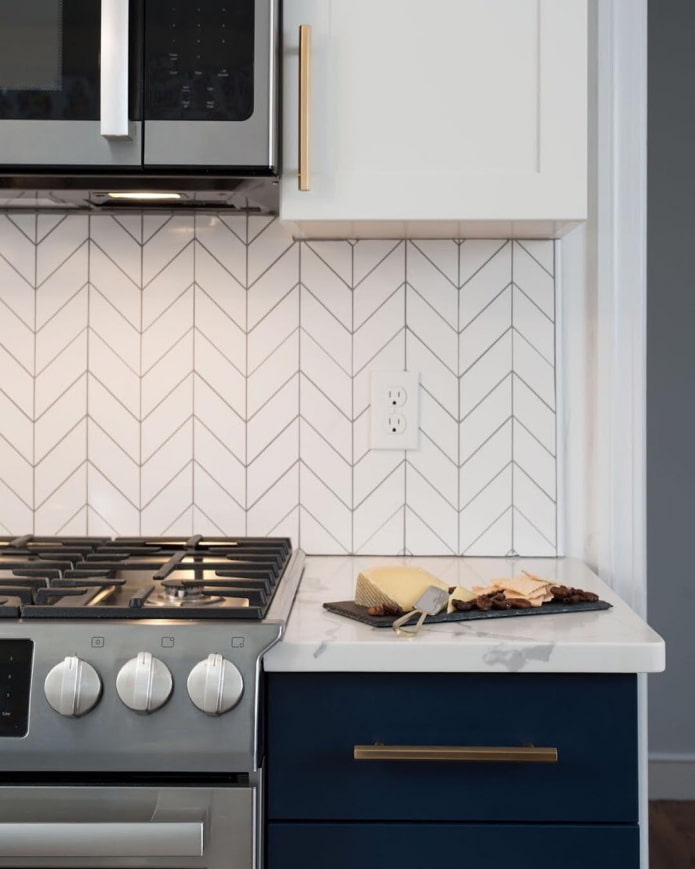
Vertical tiling
Vertical tiling in the bathroom, hallway, and even the living room has been a never-fading trend for the past couple of years. The original trend has also found its way into the kitchen interior. This format is used to visually stretch the space upward or to design an apron in the absence of an upper row of cabinets.
Lovers of clear geometry will like vertically laid tiles without offset with perfectly designed seams. For those who prefer originality, vertical laying with a slight offset and a “torn” top edge will suit.
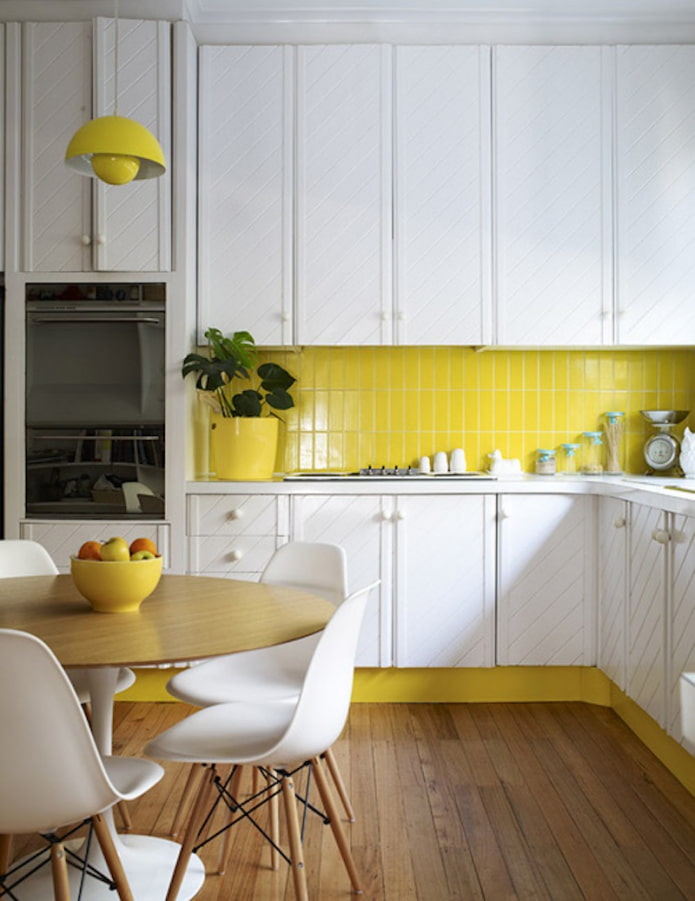
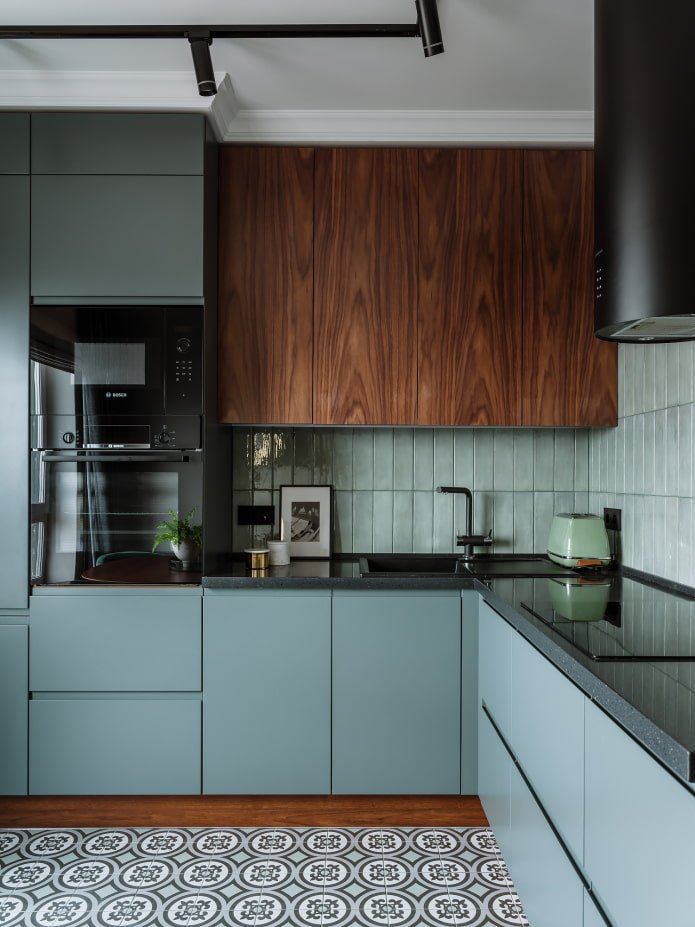
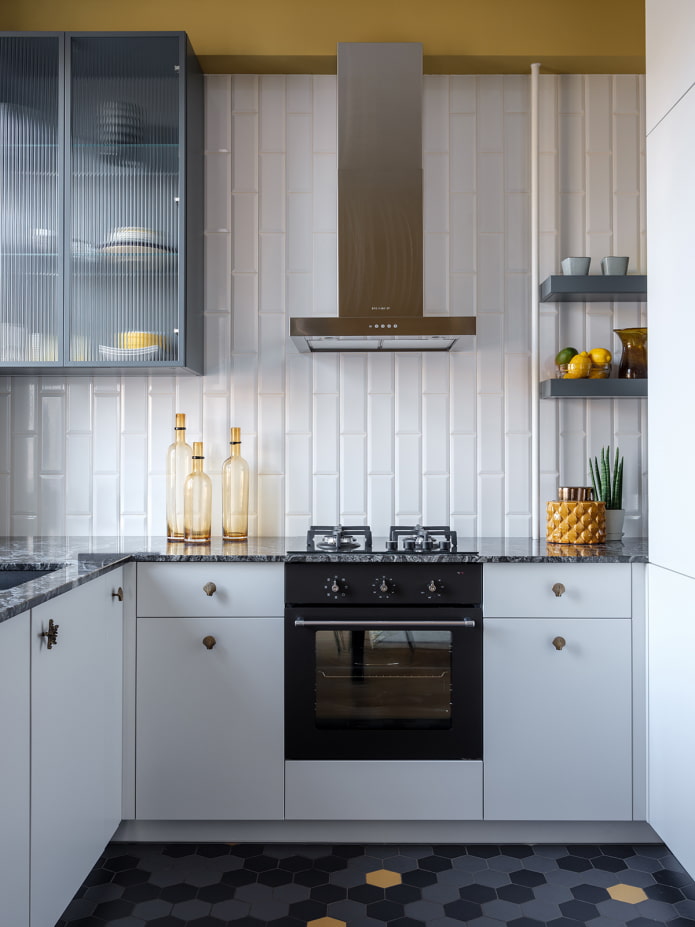
Imitation of weaving
A painstaking and rather complicated method of tiling, imitating weaving, is incredibly interesting in terms of visuals. The elements are placed perpendicular to each other. The edge of a horizontal tile is joined to the middle of a vertical one.
When using rectangular samples, the space remaining in the corners between the tiles is filled with small squares of ceramics of the same or a matching color. As a result, it seems that one row is diving under another.
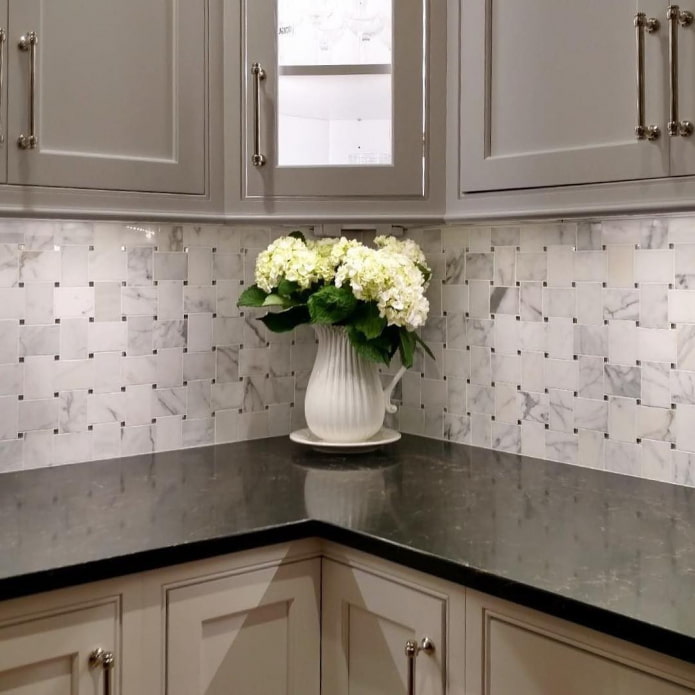
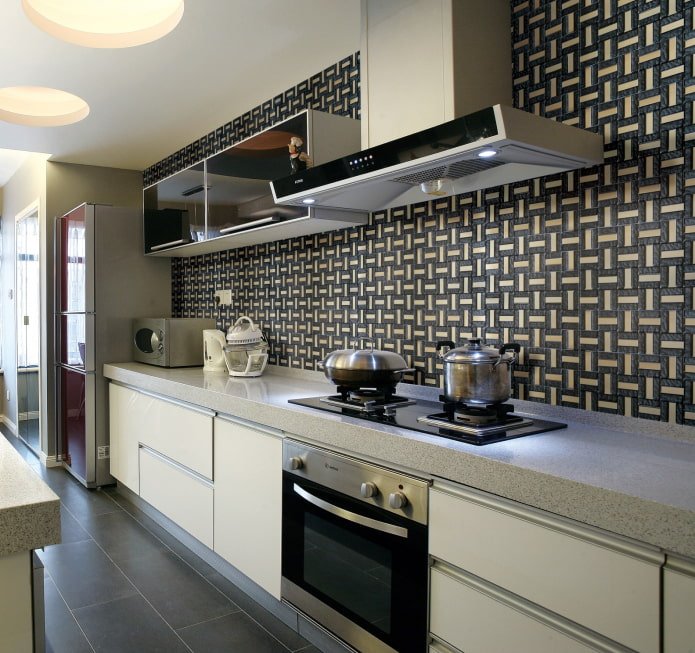
Diagonally
Diagonals are often used in interior design, but always with great caution. When used in moderation, slanted lines add movement, dynamism and originality to the space. If the angles are chosen incorrectly, they create a motley appearance and dissonance.
Due to the fact that the kitchen apron takes up a relatively small area, the diagonal placement of tiles here looks quite harmonious. Tiles are selected in rectangular or square shapes, the angle of inclination is close to 45 degrees.
A wall decorated in this way becomes an accent wall, so the furniture and decor should be selected as calm and laconic as possible.
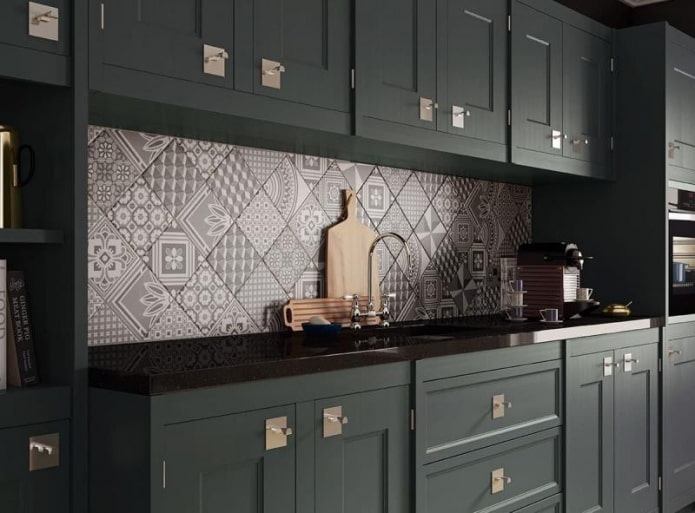
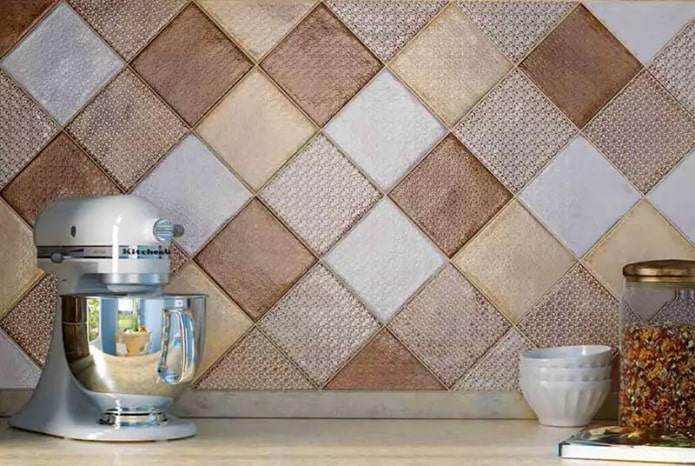
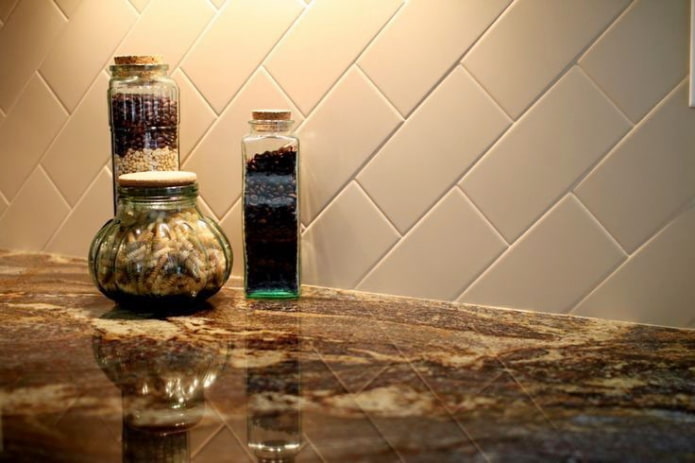
Volumetric patterns
By combining samples of different shapes and sizes in one composition, you can create an original pattern of repeating volumetric modules on the kitchen apron:
- Rectangular tiles spirally surrounding a square one create a labyrinth pattern.
- Using diamonds and parallelograms in one composition allows you to create a pattern of volumetric, repeating cubes.
- Combining matte and glossy triangular tiles of the same color creates the illusion of a relief wall.
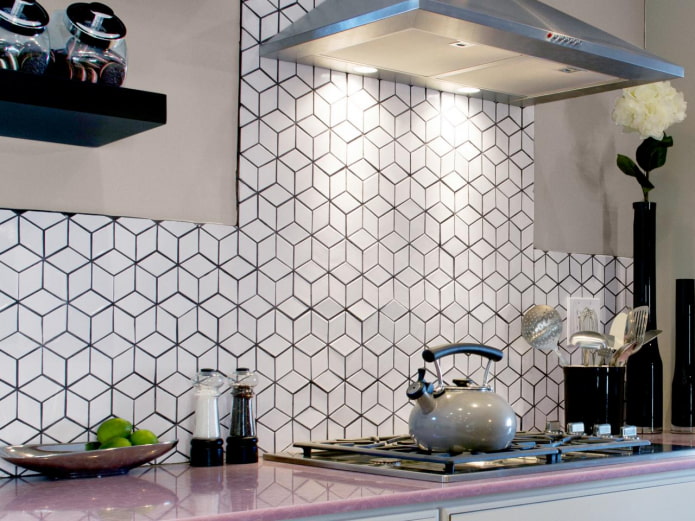
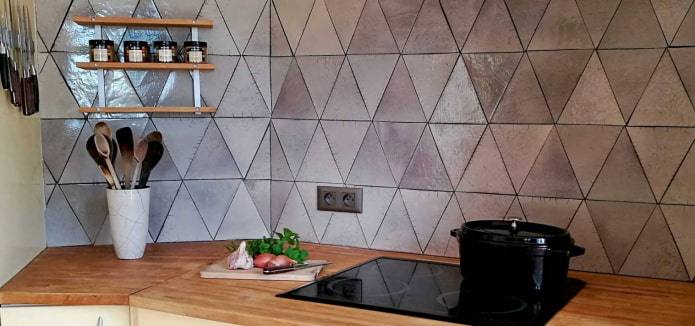
Panel on the apron
The entire area of the apron does not have to be decorated in one way. The tile area can be highlighted with an original panel. If the main part of the wall is laid horizontally, the accent part is highlighted with diagonal or vertical laying.
Often, tiles of a brighter shade with a rich pattern are used for the panel. You can experiment with colors, shapes, sizes, and framing.

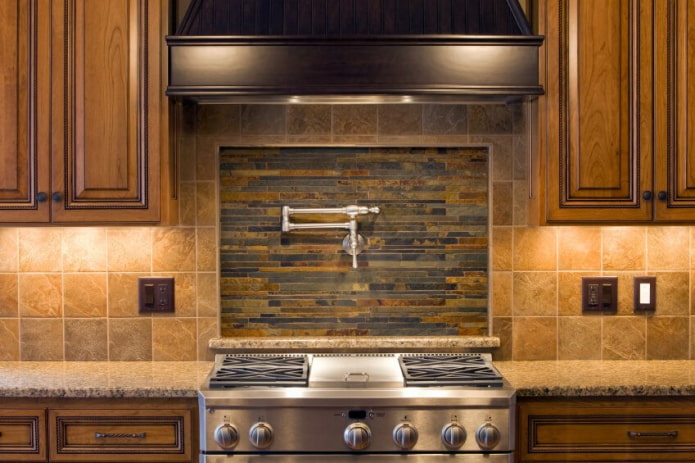
In most cases, the shape and size of the tile itself determines the best layout option. While you can experiment with rectangular or square tiles, hexagons, “scales” or elongated diamonds look unusual even when laid evenly.
Now reading:
- 10 creative ideas for decorating curtains with your own hands, adding coziness to the interior.
- Design 42 sq. m: more than 60 photos, layouts of one-room and two-room apartments.
- Decorating a Rectangular Room: Tips and 50 Photos for Inspiration.
- elegant flower beds that will perfectly complement your garden walls.
- Design 32 sq. m: 4 stylish projects and key design nuances (26 photos)